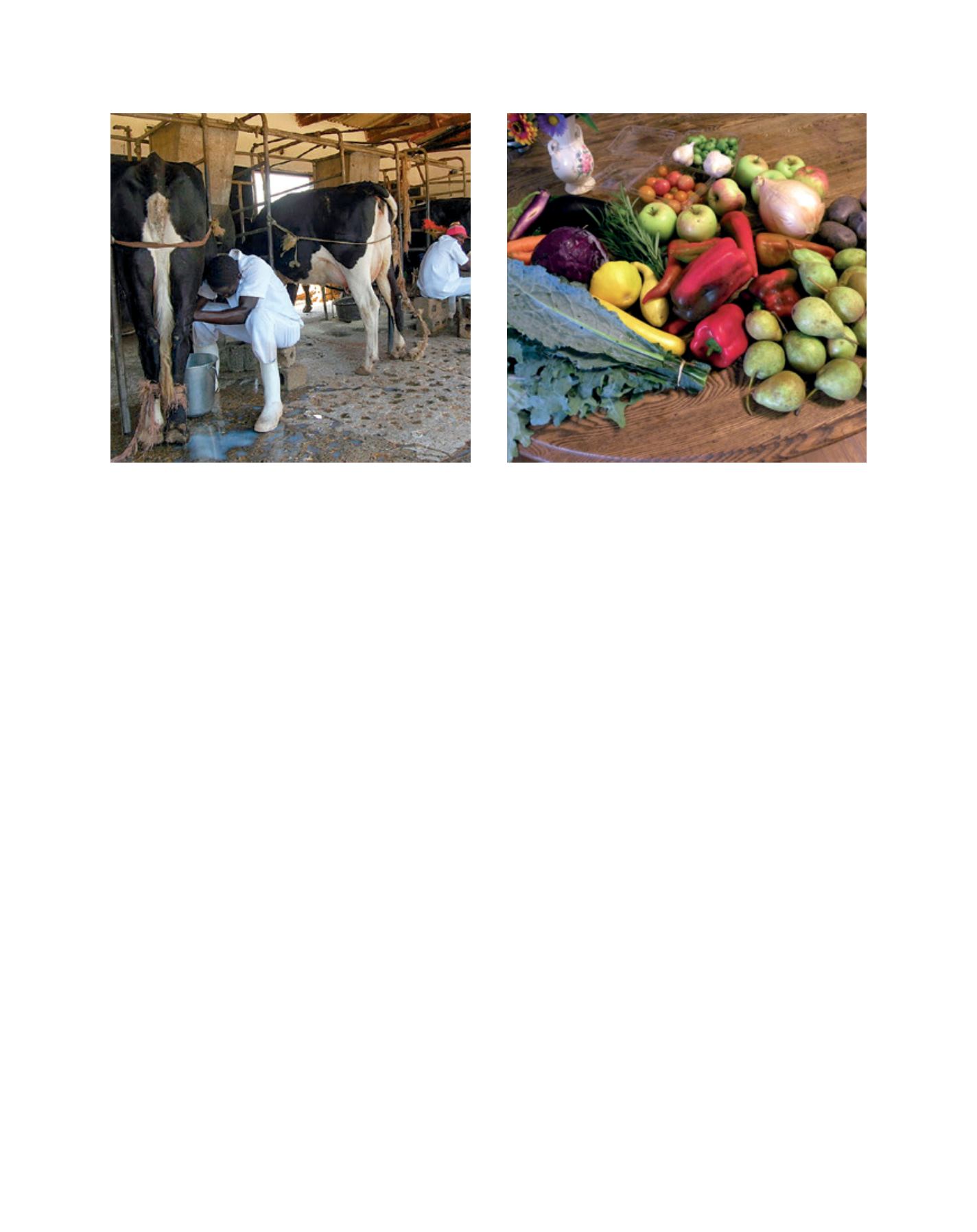

[
] 111
Image: Kati Partanen, WFO Women’s Committee, Finland
Image: Rob McClure, Hilltop Community Farm, USA
Cow milking on an African farm: the DSIP under CAADP supports family
farmers, but clearer policies are needed on agriculture financing
A community supported agriculture share at Hilltop Community Farm, Wisconsin,
USA: growers and eaters share in the risks and rewards of food production
Microfinance institutions support the needs of family
farmers and smallholder farmers in Ethiopia. However, the
exact level of availability of microfinance funds is not known
at this time. Government policies and legal structures are in
place in Ethiopia to ensure that landholding and access to
land for family farmers is protected and uniformly applied
across the regions of the country. In fact agricultural land is
owned by the state and not sold, but leased through both the
federal and regional governments. The Development Strategy
and Investment Plan (DSIP) under the Comprehensive Africa
Agriculture Development Programme (CAADP) has elements
that emphasize support to family farmers, but there is no clear
policy on agriculture financing. EHC would like to see poli-
cies in place such as agriculture financing policy, which would
facilitate access to affordable farm credit.
In Malaysia, according to Penubuhan Pertubuhan Peladang
Kebangsaan (NAFAS) - National Farmers’ Organization of
Malaysia, family farms are handed down fromgeneration to gener-
ation. They are managed and operated by the family as the main
source of family income. There are approximately 800,272 family
farms inMalaysia. The Malaysian New Economic Transformation
Program and National Agro-Food Policy support family farming.
According to the Canadian Federation of Agriculture (CFA),
family-managed farm operation – be it a corporation, partner-
ship or single proprietorship – makes up 72-98 per cent of the
farmers in Canada. Family farming is an excellent stewardship of
land and natural capital. The policies in place to support family
farming in Canada include Farm Credit Canada; young farmer
loans; the ‘Ag more than ever’ campaign and Growing Forward 2
(however this is for farmers in general, not only family farmers).
Meanwhile CFA would like to see long-term food strategies in
place that all stakeholders agree upon, industry and government.
The National Farmers Union in the United States of America
(NFUUSA) recognizes family farming as a unit utilizing land and
other capital investments operated by one farmer together with
his/her family, who provide stewardship, management and take
the risk. All NFU USAmembers are family farmers or supporters
of family farming. According to NFU USA, family farming is the
prime economic driver of rural communities in the USA. All farm
policy is governed by the Farm Bill, a safety net that includes
limitations that direct assistance to family farming. NFU USA
would like to see more attention to concentration and consolida-
tion in agriculture at the government level.
Upon the United States Senate designation of the 2014
International Year of Family Farming on 17 September 2014,
NFU USA President Roger Johnson, said, “Recognizing the
critical role family farmers play in providing food, fuel, feed
and fibre to the global population and alleviating hunger and
poverty is important because we need to be developing our
future farmers – both in the USA and abroad – right now.”
In Finland, according to the Central Union of Agricultural
Producers and Forest Owners (MTK), on family farms the
decision-making, juridical and economic responsibility lies in
the hands of the family, wherein the family contributes labour,
and ownership is passed on (down) through the family. Nearly
all Finnish farms are family farms. Family farming provides
employment in rural areas in the production, processing and
serving of Finnish food. In fact 80 per cent of the food eaten in
Finland is produced in Finland. There is financial support from
the Finnish Government for family farmers, including start-up
support for young farmers and capacity building. MTK would
like to see government policies in place to support competitive-
ness, fair trade and consumer information.
Family farming in Uganda, according to the Uganda
National Farmers Federation (UNFFE) is characterized by
a small resource base, low input and low output. Over 90
per cent of the farms in Uganda are family farms, and within
UNFFE 95 per cent of the members are family farmers. The
bulk of Ugandan exports are aggregates of surplus from family
farming. The DSIP under CAADP has elements that empha-
D
eep
R
oots
















